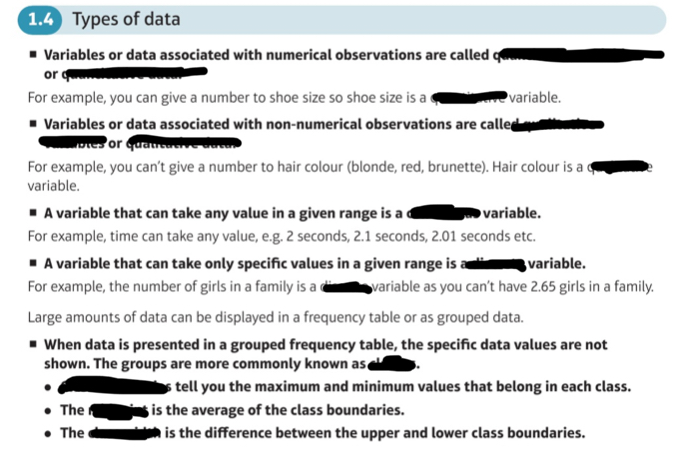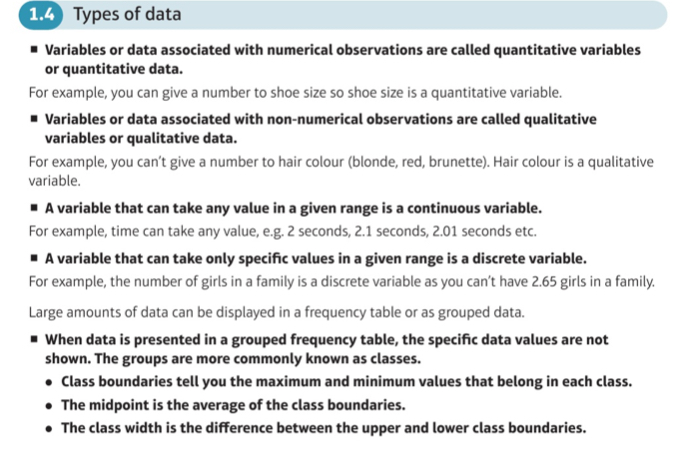1.3 non-random sampling, 1.4 types of data
1/10
There's no tags or description
Looks like no tags are added yet.
Name | Mastery | Learn | Test | Matching | Spaced |
|---|
No study sessions yet.
11 Terms
What are two types of non-random sampling we need to know?
Quota sampling
Opportunity sampling
What is quota sampling?
An interviewer or researcher selects a sample that reflects the characteristics of the whole population
How is stratified sampling carried out?
The population is divided into groups according to a given characteristic
The size of each group determines the proportion of the sample that should have that characteristic
As an interviewer, you would meet people, assess their group and then, after interview, allocate them into the appropriate quota
This continues until all quotas have been filled
If a person refuses to be interviewed or the quota into which they fit is full, then you simply ignore them and move on to the next person
What is opportunity sampling?
Consists of taking the sample from people who are available at the time the study is carried out and who fit the criteria you are looking for
What is opportunity sampling sometimes called?
Convenience sampling
How would opportunity sampling be carried out?
For example, this could be the first 20 people you meet outside a supermarket on a Monday morning who are carrying shopping bags
What are advantages of quota sampling?
Allows a small sample to still be representative of the population
No sampling frame required
Quick, easy and inexpensive
Allows for easy comparison between different groups within a population
What are disadvantages of quota sampling?
Non-random sampling can introduce bias
Population must be divided into groups, which can be costly or inaccurate
Increasing scope of study increases number of groups, which adds time and expense
Non-responses are not recorded as such
What are advantages of opportunity sampling?
Easy to carry out
Inexpensive
What are disadvantages of opportunity sampling?
Unlikely to provide a representative sample
Highly dependent on individual researcher

